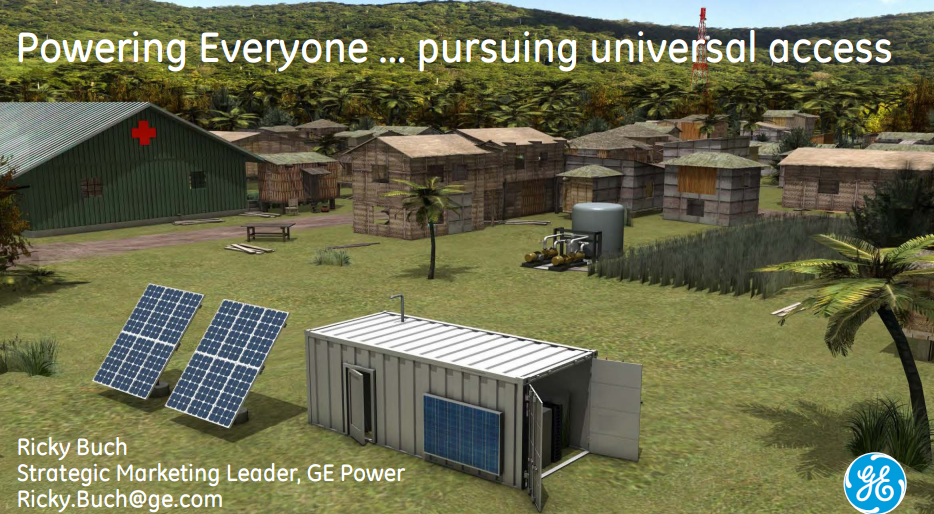
Ricky Buch discusses GE Power pilot micrgrid projects:
Being in a niche market has its own advantages and shortcomings. While it gives us more freedom to innovate, it could also isolate us. This means that we need to constantly reach out to companies and entrepreneurs who are working on the same problem we are all trying to solve –sustainable energy access.
GE Power: building microgrids for the rural poor
The World Bank hosts a series of brown bag lunches, inviting organizations that deliver low-cost and timely electricity services through microgrids. On Tuesday, Dec 6, the World Bank invited Ricky Buch, Strategic Marketing Leader, General Electric’s Power business, to share his experiences with building microgrids in developing regions.
Buch spoke about the GE Power pilot microgrid projects in India (Bihar and Uttar Pradesh) and upcoming projects in South East Asia and Africa. For these pilots, GE has designed a hybrid system that combines solar and batteries with a diesel genset. This microgrid “CONTAINER” includes an energy management system capable of reducing the energy cost up to 30% versus traditional systems. The “container” also includes a digital remote monitoring tool that can access and monitor any changes in the smooth functioning of the microgrid. GE also is investigating extending this digital platform to include demand side management, integration with payment systems, and forecast analytics to predict demand by customer type and region.
World Bank/ESMAP: Improvements in microgrid components, storage, price
Jon Exel, Team Lead for World Bank/ESMAP’s Global Facility on Mini Grids, spoke about how the definition and components of the microgrid have improved significantly over the last years and that the “convergence” of innovations on many of the elements that impact electricity delivery through mini grids is bringing us closer to a breakthrough for upscaling. He indicated that the cost of PV systems have decreased, that the storage dynamics are changing for example with Tesla’s Gigafactory and opening an “energy” store in South Africa, that back-up diesel generators have become more efficient at lower load factors and have also reduced in cost, that smart electronics are now affordable for hybrid power systems as well as for end use metering and remote payment systems, that end user appliances are much more efficient and that with the latest geospatial tools the planning process has become much less cumbersome. In countries where regulatory and financing arrangements align with these innovations, he indicated that it wouldn’t come as a surprise to see a magnitude change in costing from $3.0 to $4.0/kWh a decade ago to US$0.2 to US$0.3 /kWh within the next years.
One bottleneck in starting microgrid projects is uncertainty over when the grid will arrive. Since electricity from the national grid is often much cheaper, this creates an obstacle to investors in a microgrid, lest the national grid shows up down the road overnight. This also creates an additional step for microgrid designers to think through — will this microgrid be grid-compatible?
Convincing customers: this is solution to invest in
Exel drew a parallel between the Solar Home System markets a few years back to the current microgrid market. In Sri Lanka, a very similar situation occurred with the solar home systems (SHS). Companies selling SHS had a tough time convincing customers to invest in an SHS. Customers did not see beyond their belief that the grid connection is going to arrive shortly and all their newly invested SHS would be rendered useless. Breakthrough was achieved when SHS companies gave a guarantee to buy back the SHS at 80% of the cost in the first year, 60% of the cost in the subsequent year, and so forth if the grid arrives. This guarantee put the customers worry at ease, and allowed SHS market to take off.
With another enlightening session on “Minigrids for Rural Electrification” from the World Bank, we are closer to decoding the microgrid black box and accelerating the electrification in rural communities.
